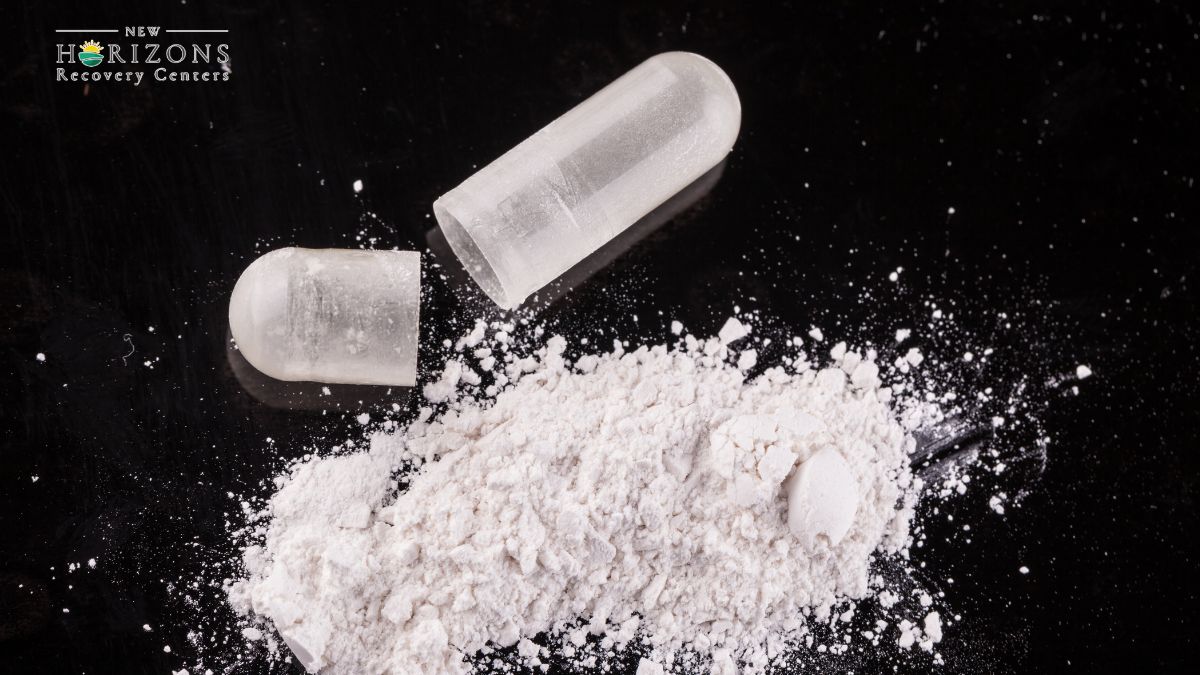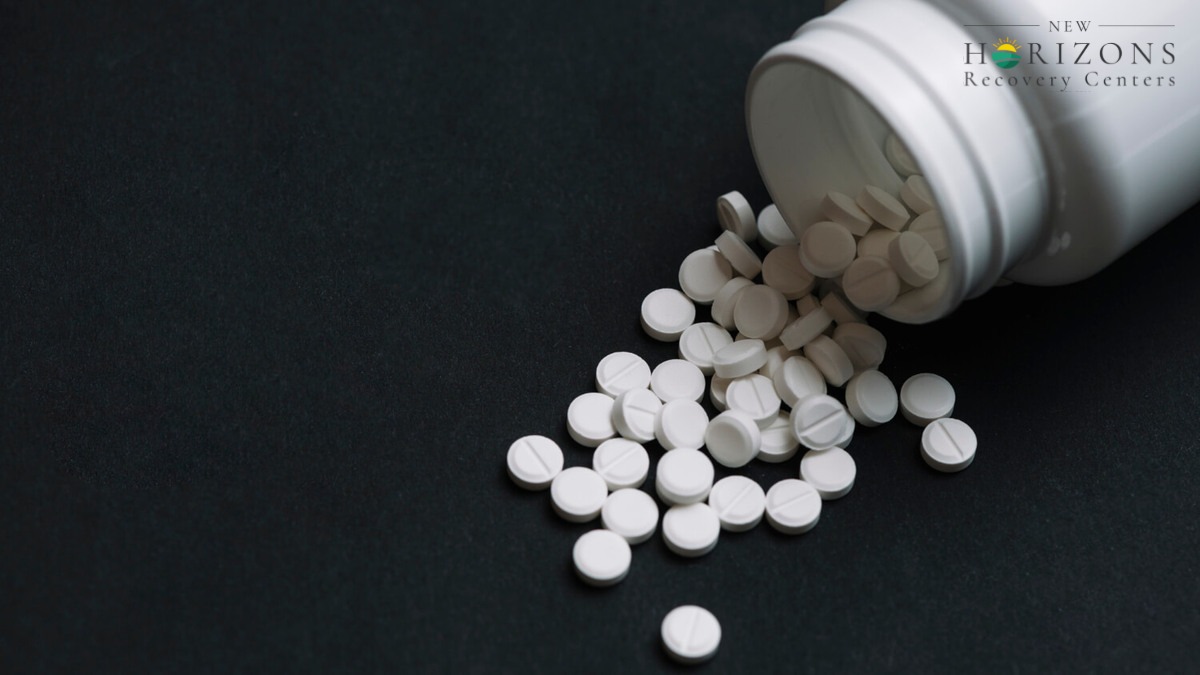Understanding Slip vs. Relapse
When it comes to addiction recovery, distinguishing between a slip and a relapse is important for understanding the progression of substance use and its impact on an individual's recovery journey. While both a slip and a relapse involve the use of alcohol or drugs, there are distinct differences between the two.

Differentiating a Slip from a Relapse
A slip, also known as a lapse, refers to a single unplanned use of alcohol or drugs followed by a swift cessation. It is a momentary deviation from the recovery path, often strengthening an individual's resolve to remain sober. In other words, a slip is a brief occurrence where someone may briefly use substances but quickly realizes their mistake and stops, avoiding a full relapse into addiction.
On the other hand, a relapse occurs when an individual in recovery returns to alcohol or drugs after a period of sobriety. It involves a complete abandonment of the recovery plan and may result in detrimental and sometimes deadly consequences [2]. A relapse is generally considered to be repeated use of a substance in high doses or frequent binge drinking, indicating a more serious and dangerous situation than a slip-up.
To summarize, a slip is a one-time, unplanned use of substances that is quickly recognized and halted, while a relapse involves a complete return to alcohol or drugs after a period of sobriety, often with a failure to take appropriate steps to prevent further substance use.
Intentions Behind Slip and Relapse
The intentions behind a slip and a relapse offer further insight into the differences between the two. In most cases, addiction professionals distinguish between a slip and a relapse by examining the individual's intention. A slip is often seen as an unexpected and impulsive action, while a relapse typically indicates a return to old substance abuse habits, often starting with a slip-up and a failure to take appropriate preventive measures.
While a slip may provide an opportunity for individuals to learn from their mistake and reinforce their commitment to sobriety, a relapse marks a significant setback in the recovery journey, requiring renewed efforts to regain sobriety.
Understanding the distinction between a slip and a relapse is crucial for addiction recovery professionals and individuals in recovery alike. By recognizing the intentions and consequences of these occurrences, appropriate strategies can be implemented to address slips and prevent relapses, ultimately supporting long-term sobriety.
Factors Influencing Slip and Relapse
When it comes to addiction recovery, understanding the factors that can influence a slip or a relapse is crucial. While slips and relapses may seem similar, they have distinct characteristics and triggers. Let's explore the triggers for a slip in recovery and the triggers leading to a relapse.
Triggers for a Slip in Recovery
A slip in addiction recovery refers to an unforeseen, one-time event where an individual engages with addictive substances but does not fully return to their previous, destructive lifestyle. Some common triggers for slips include:
- Unknowingly consuming drugs or alcohol: This can happen in situations where substances are present but not immediately apparent.
- Tempting situations: Being in environments or situations that are associated with previous substance use can create a strong urge to engage in addictive behavior.
- Stress-induced triggers: High levels of stress or emotional turmoil can weaken one's resolve and increase the likelihood of a slip.
Recognizing and understanding personal triggers is crucial in preventing slips. By knowing what situations or emotions can lead to a slip, individuals in recovery can take proactive measures to avoid or manage these triggers. Seeking support from a therapist, attending support group meetings, and practicing healthy coping mechanisms are effective strategies to prevent slips.
Triggers Leading to Relapse
A relapse, on the other hand, involves making a conscious decision to abandon the recovery plan and return to pre-treatment ways. It is a more intense and chronic version of a slip, characterized by a full-fledged return to addictive behaviors and substances. Some common triggers leading to relapse include:
- Premeditation: Unlike slips, relapses involve deliberate planning and a choice to engage in addictive behaviors.
- Return to feeding the addiction: Individuals in relapse may fall back into their previous destructive lifestyle, regularly engaging with addictive substances.
- Habitual abuse: Relapse often involves a return to habitual abuse of drugs or alcohol, even if the addictive behavior may look different than before.
To prevent relapse, it is crucial to identify and address the underlying factors that contribute to addictive behaviors. This may involve seeking professional help, engaging in ongoing therapy, and building a strong support network. Developing healthy coping mechanisms, practicing self-care, and learning to manage stress effectively are also essential aspects of relapse prevention.
Understanding the difference between slips and relapses is vital in addiction recovery. While slips are unexpected events that can be managed, relapses involve a conscious choice to return to destructive behaviors. By recognizing the triggers for slips and relapses, individuals can take proactive steps to prevent them, maintain their recovery, and continue on their path to a healthier, substance-free life.
Response to Slip and Relapse
When it comes to addiction recovery, slips and relapses are two distinct occurrences with different implications. Understanding how to address a slip and deal with a full relapse is crucial for individuals on their recovery journey.
Addressing a Slip in Recovery
A slip refers to a single unplanned use of alcohol or drugs, often considered a brief deviation from the recovery plan. Addiction professionals distinguish between slips and relapses by examining the individual's intention. In the case of a slip, the person may have inadvertently encountered triggers or faced unexpected challenges, leading to a momentary lapse.
Addressing a slip requires acknowledging its occurrence and reflecting on the reasons behind it. It is important for individuals to recommit to their recovery and make a conscious decision to learn from the slip, rather than allowing it to derail their progress. Seeking support from a recovery coach, sponsor, therapist, or loved ones can be immensely helpful in navigating the challenges and preventing future slips.
Dealing with a Full Relapse
In contrast, a full relapse involves a conscious decision to abandon the recovery plan and return to pre-treatment ways. This decision typically involves premeditation and a return to feeding the addiction [1]. Even if the addictive behavior may manifest differently than before, consistent abuse of drugs or alcohol constitutes a relapse.
Dealing with a full relapse requires a comprehensive reassessment of the recovery journey. It is important to recognize that a relapse does not negate the progress made thus far. Seeking immediate support from addiction professionals, therapists, or support groups is crucial in order to address the underlying issues that led to the relapse and develop a new recovery plan. Rebuilding one's recovery and committing to a fresh start can help individuals regain control of their lives.
Understanding the distinction between a slip and a relapse allows individuals in recovery to respond appropriately to each situation. By acknowledging slips, reflecting on their causes, and rededicating themselves to recovery, individuals can continue moving forward. In the case of a relapse, seeking immediate support and making a commitment to rebuild the recovery journey are essential steps towards regaining stability and making lasting progress.
Consequences of Slip vs. Relapse
In the journey of recovery, both slips and relapses can have significant consequences. While slips are seen as temporary setbacks, relapses are more intense and chronic versions of slips. Understanding the impact of both is crucial for individuals on the path to recovery.
Impact of a Slip in Recovery
A slip, also known as a lapse, does not erase the progress made during the days of sobriety that preceded it. It is important to recognize that a slip is a temporary deviation from the recovery journey and does not mean starting the count of sober days from the beginning. Every day, decision, slip, or relapse counts in the recovery journey.
The consequences of a slip can vary depending on the individual and the specific circumstances of the slip. It may lead to feelings of guilt, disappointment, or frustration. However, it can also serve as a learning opportunity, allowing individuals to identify triggers and areas for growth in their recovery process. By acknowledging a slip, individuals can reassess their strategies, seek support, and continue their journey towards long-term recovery.
Consequences of a Full Relapse
A relapse, on the other hand, is a more serious and chronic occurrence compared to a slip. It involves falling back into a previously destructive lifestyle, re-engaging with addictive substances regularly. Relapses often start with a slip-up, but they go beyond a one-time action. They typically involve repeated use of a substance in high doses or frequent binge drinking [3].
The consequences of a full relapse can be more severe and far-reaching. It may lead to a complete derailment of the recovery progress, affecting various aspects of an individual's life including physical health, mental well-being, relationships, and overall stability. Relapses can also result in a loss of trust from loved ones and may require individuals to restart their recovery journey.
It is important to note that while a slip is considered a setback, it does not automatically lead to a full relapse. By recognizing the consequences of a slip and taking appropriate steps to address it, individuals can prevent it from escalating into a relapse. Seeking support from a healthcare professional, attending support groups, and utilizing coping strategies can be invaluable in preventing further substance use and maintaining long-term recovery.
Recovery Journey After Slip or Relapse
When navigating the path to recovery, it's important to understand how to continue the journey after a slip or relapse. While a slip and a relapse may have different implications, both can serve as opportunities for growth and learning. Let's explore what steps can be taken to continue the recovery journey in each scenario.
Continuing Recovery Post-Slip
A slip refers to a temporary lapse in sobriety, where an individual may engage in substance use or other addictive behaviors. It's important to recognize that a slip does not erase the days of sobriety that preceded it. Every day, decision, slip, or relapse counts in the recovery journey.
After experiencing a slip, it is crucial to use it as a learning experience. Reflect on the circumstances that led to the slip and identify potential triggers or areas for improvement. Reach out to a support network, such as a sponsor, therapist, or support group, for guidance and encouragement. Utilize coping mechanisms and strategies learned during recovery to regain focus and recommit to sobriety.
Remember, a slip is not a failure, but rather an opportunity to reinforce one's commitment to recovery. By acknowledging the slip, learning from it, and seeking support, individuals can continue their recovery journey without having to start the count of sober days from the beginning.
Rebuilding Recovery Post-Relapse
A relapse, on the other hand, refers to a more significant return to addictive behavior after a period of sustained sobriety. While a relapse can be disheartening, it is essential not to allow it to undermine the progress made towards a sober future. Recovery is a continuous process, and setbacks can be a part of that journey.
After experiencing a relapse, it is important to reach out for help and support as soon as possible. This may involve reconnecting with a treatment program, therapist, or support group. It can be helpful to evaluate the factors that contributed to the relapse and develop a plan to prevent similar situations in the future.
Rebuilding recovery post-relapse requires a renewed commitment to sobriety and a willingness to address any underlying issues that may have contributed to the relapse. It is essential to prioritize self-care, develop healthy coping mechanisms, and surround oneself with a supportive network.
Recovery is a personal journey, and everyone's path may look different. It is important to be honest with oneself and choose the approach that best serves one's sobriety journey [1]. With determination, support, and a focus on personal growth, it is possible to rebuild and continue the recovery journey after a relapse.
Preventing Slip and Managing Relapse
Preventing slip-ups and effectively managing relapses are essential components of maintaining long-term recovery from addiction. Recognizing warning signs and implementing relapse prevention strategies can significantly aid in reducing the chances of a slip or relapse.
Warning Signs of Potential Slip
It is crucial for individuals in recovery to be aware of the warning signs that might precede a slip. These signs can vary from person to person, but some common indicators include:
- Increased cravings for drugs or alcohol
- Feelings of restlessness or irritability
- Changes in sleeping patterns
- Social isolation or withdrawal
- Neglecting self-care and healthy coping mechanisms
- Loss of interest in activities previously enjoyed
- Rationalizing or justifying substance use
- Associating with individuals who use substances
By recognizing these warning signs, individuals can take proactive steps to prevent a slip and seek the necessary support to maintain their recovery.
Strategies for Relapse Prevention
Developing an effective relapse prevention plan is crucial in managing the risk of relapse. Here are some strategies that can help individuals in recovery stay on track:
- Maintain a support network: Surrounding oneself with a strong support network of friends, family, or fellow individuals in recovery can provide encouragement and accountability. Regularly attending support group meetings, therapy sessions, or counseling can be beneficial in staying connected to a supportive community.
- Identify and avoid triggers: Identifying personal triggers that may lead to substance use is vital. Triggers can include specific people, places, or situations that evoke cravings or negative emotions. Avoiding or finding healthy alternatives for these triggers can help reduce the risk of relapse.
- Practice self-care: Engaging in self-care activities is essential for overall well-being and relapse prevention. This can include maintaining a healthy lifestyle through regular exercise, proper nutrition, and adequate sleep. Engaging in stress-reducing activities such as meditation, yoga, or hobbies can also help manage triggers and promote emotional well-being.
- Develop coping skills: Learning healthy coping mechanisms to deal with stress, cravings, and negative emotions is crucial in relapse prevention. This may involve seeking therapy, counseling, or attending support groups that teach effective coping strategies. Building a toolbox of coping skills can help individuals navigate challenging situations without resorting to substance use.
- Create a relapse prevention plan: Developing a personalized relapse prevention plan with the help of a therapist or counselor can provide a roadmap for managing potential slips or relapses. This plan can outline specific steps to take when warning signs arise, including reaching out to a support system, attending additional therapy sessions, or adjusting medication if applicable.
By proactively implementing these strategies, individuals in recovery can significantly reduce the risk of slipping or relapsing. It's important to remember that slips do not define recovery, and seeking help promptly can support individuals in regaining their footing and continuing on their recovery journey.





-ink.jpeg)
-ink.jpeg)
